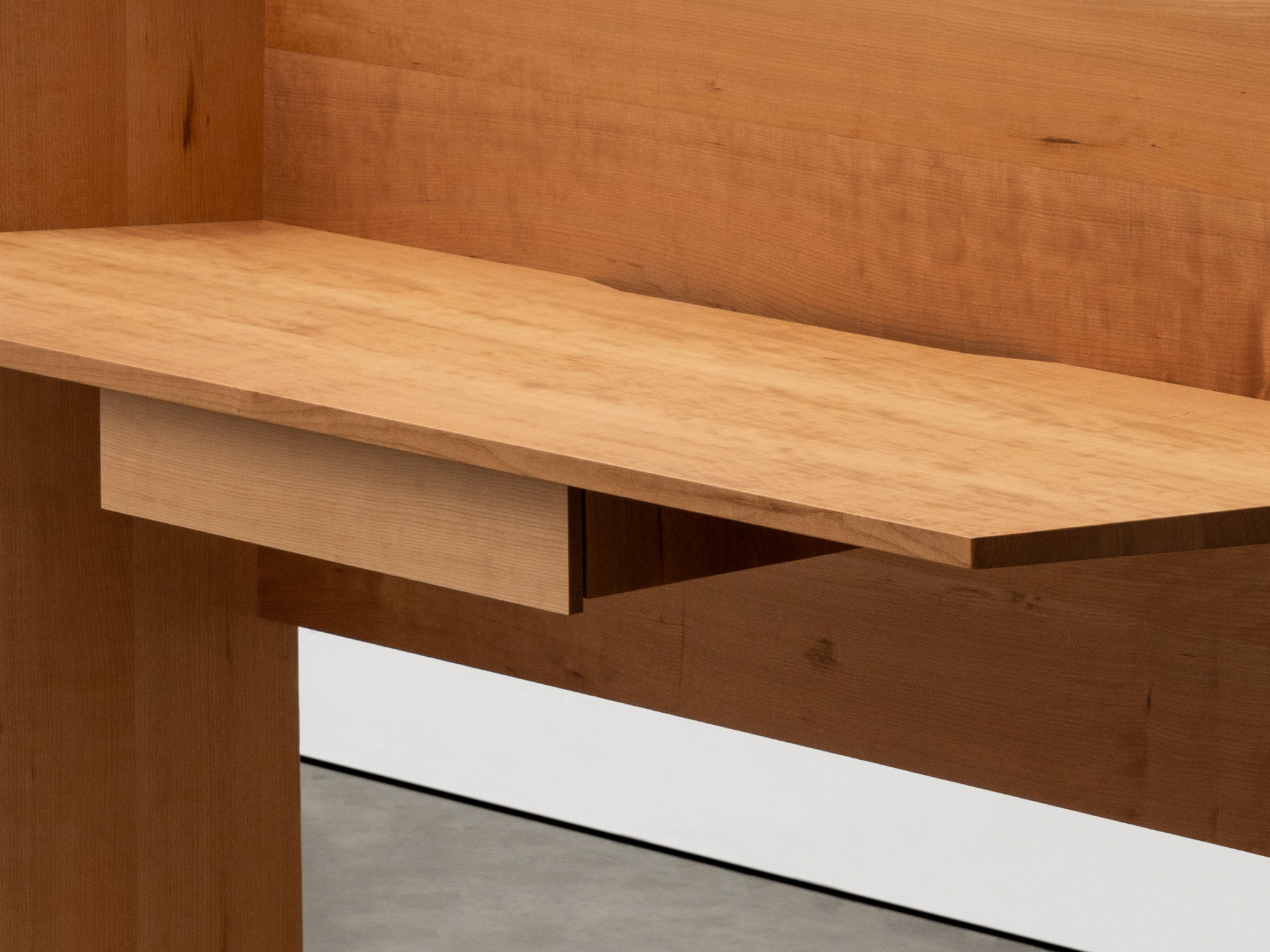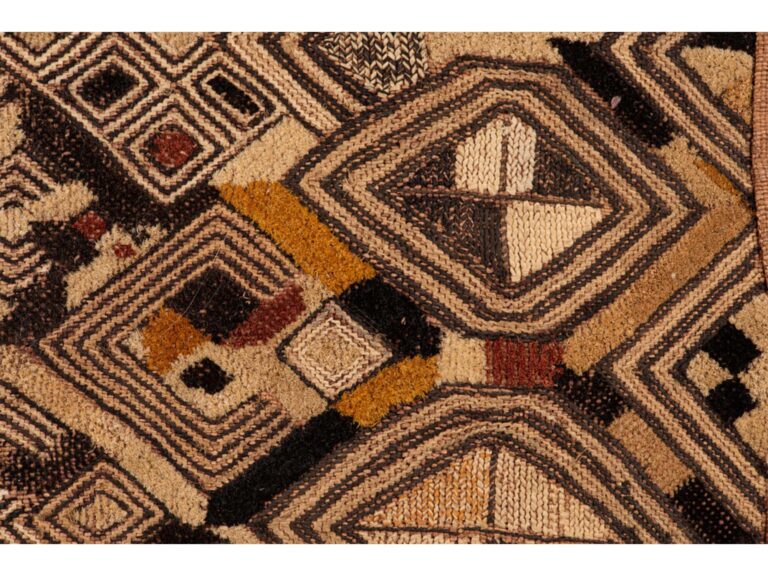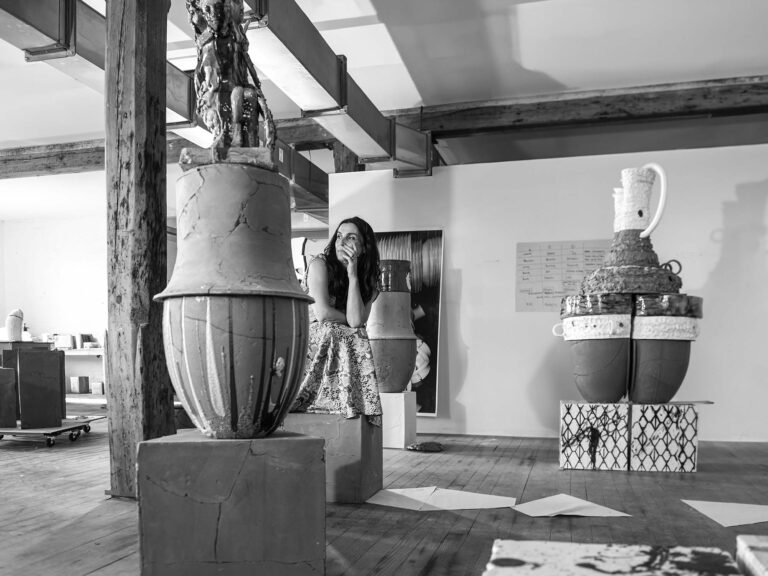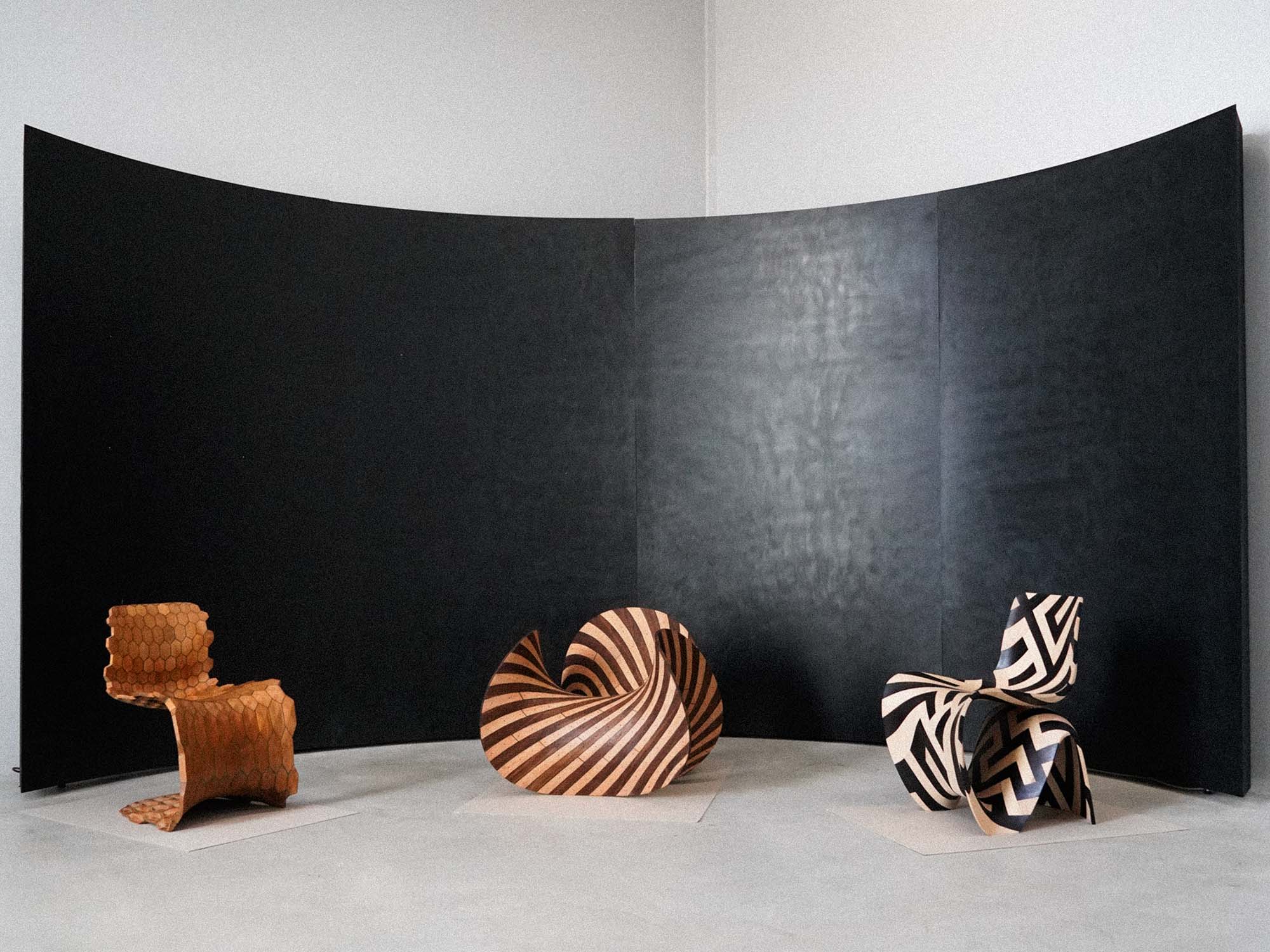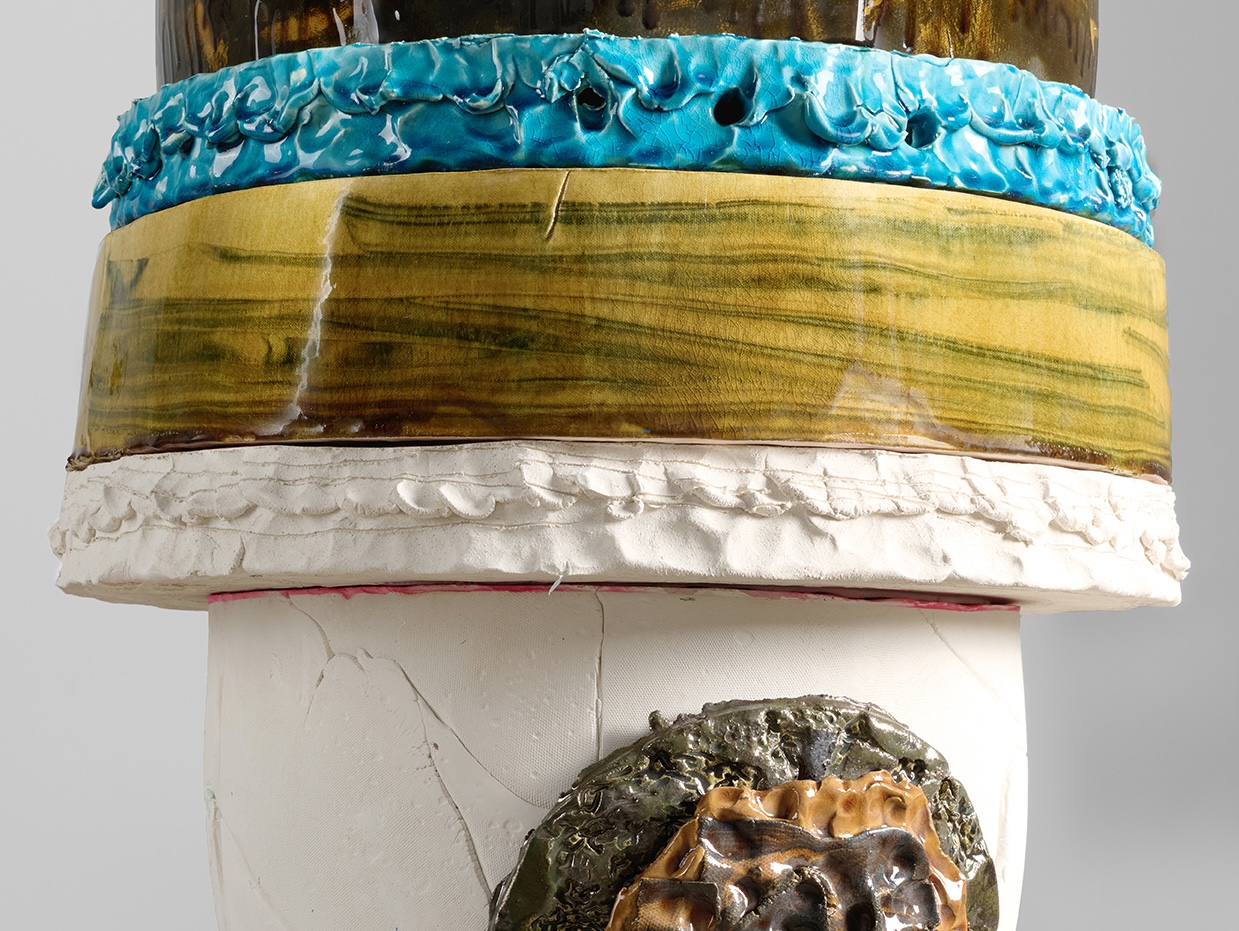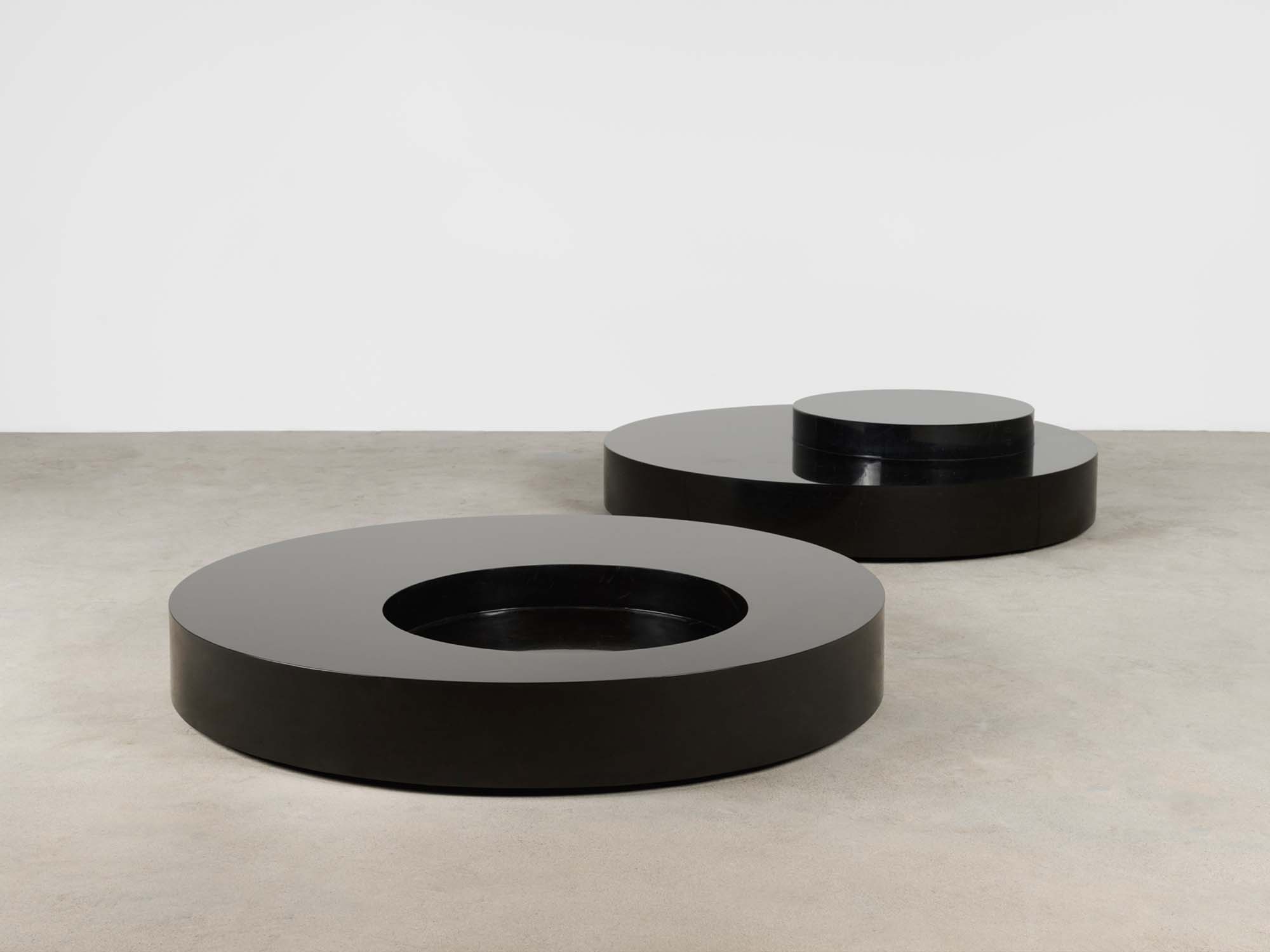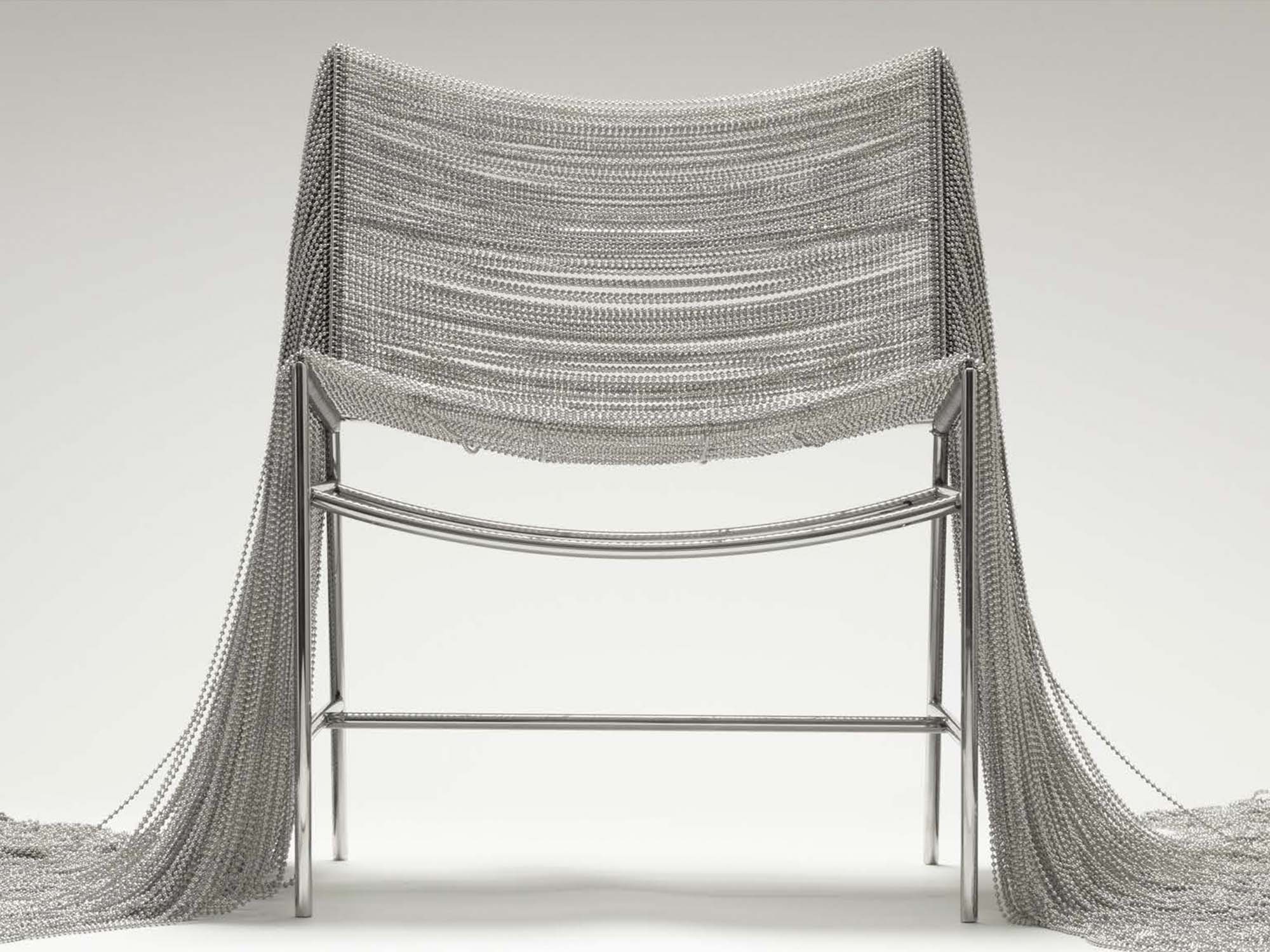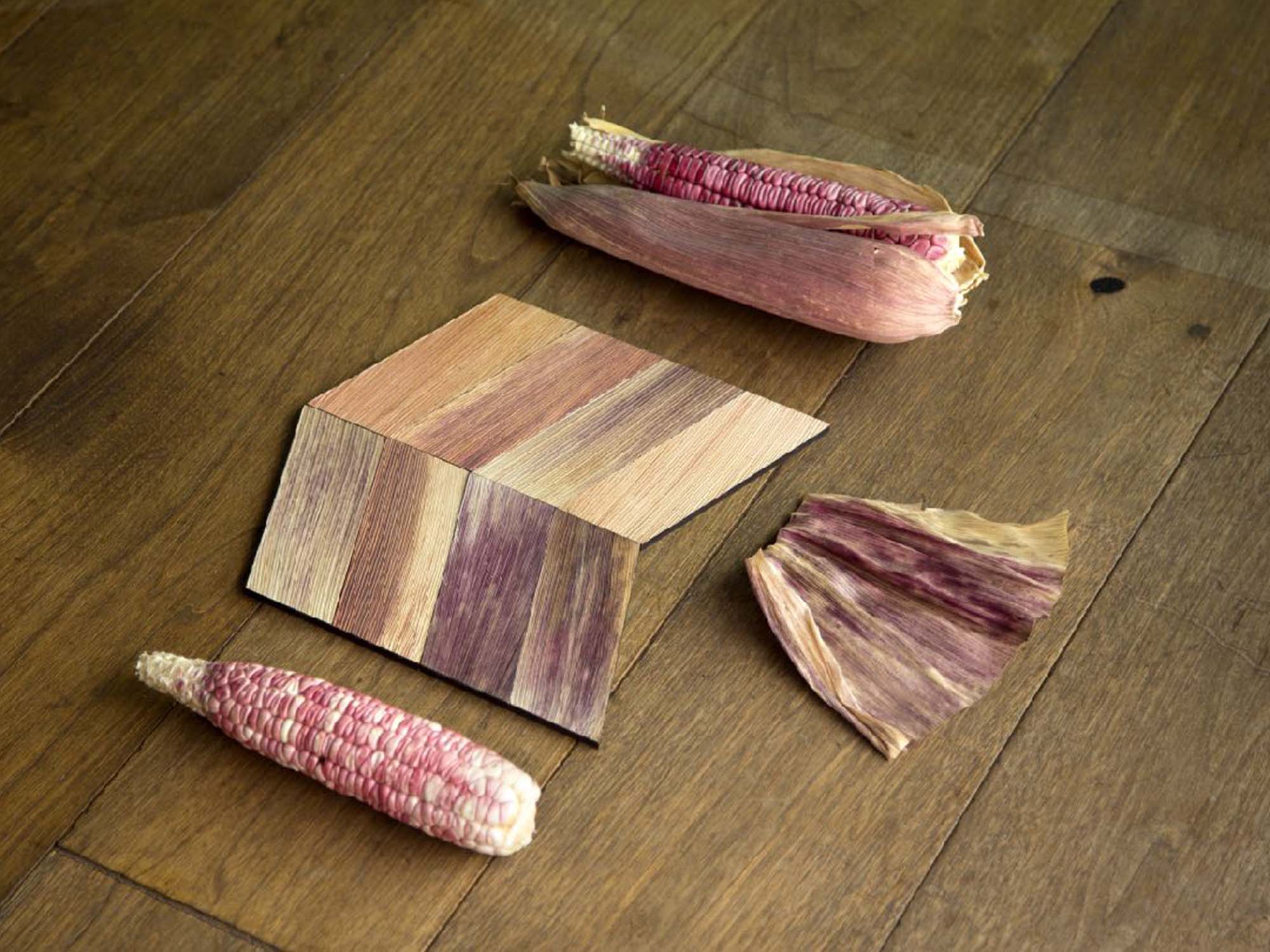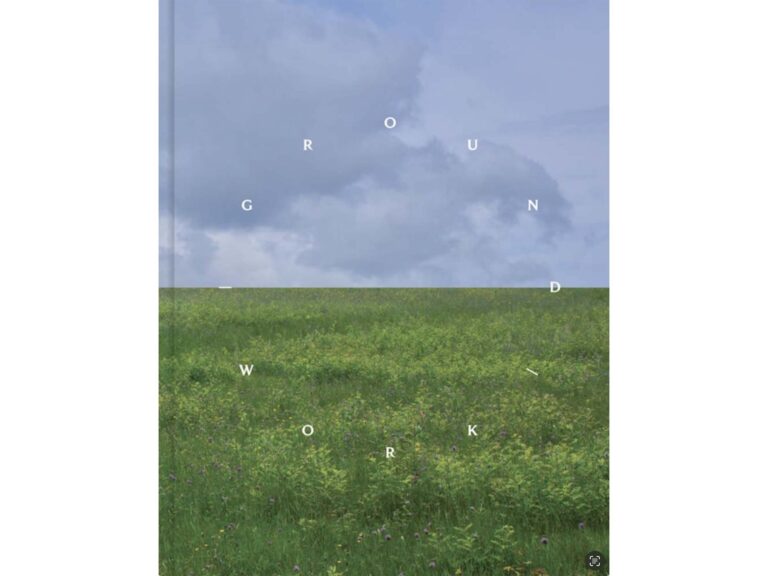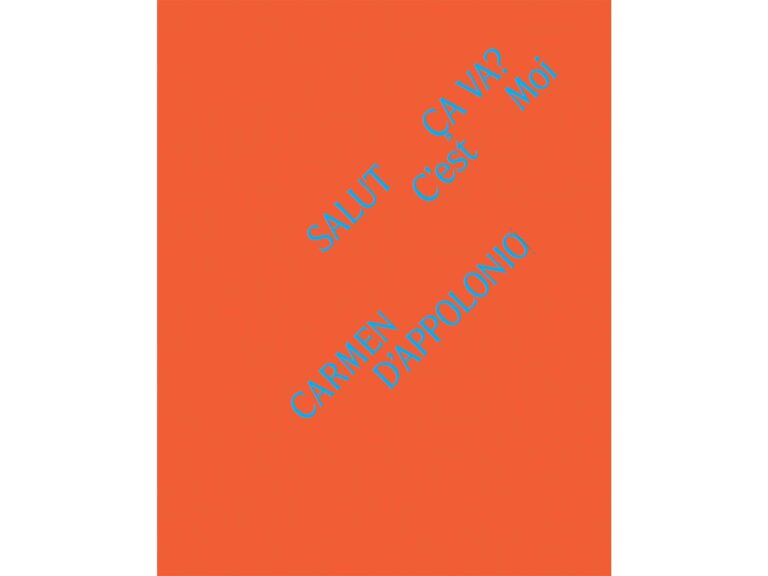By Formafantasma
Formafantasma’ Formation is a collaboration with New York-based design gallery Friedman Benda. This collection of furniture and lighting—comprising a table, a desk, an armchair, and several lighting objects—embodies a restrained formal language, exploring the material dialogue between cherry wood and aluminum. It resists extravagance not as a rejection but as a conscious stance: an assertion that design, beyond self-expression, must be reflective and attuned to its time: Formation seeks to transcend the ephemeral in favor of an enduring presence.
This pursuit is subtly informed by Formafantasma’s reverence for the Shaker community, Frank Lloyd Wright, and George Nakashima—makers and designers who shaped their own aesthetic and philosophical foundations. The Shakers’ approach to utility and transcendence is mirrored in the collection’s essential forms and its use of cherry wood, a material deeply embedded in American cabinetmaking. Wright’s synthesis of craft and technology, and Nakashima’s reverence for timber as a living entity, find echoes in the collection’s interplay of warm wood and brushed aluminum—a material more often associated with contemporary digital devices.
Emerging from a dialogue with Friedman Benda, Formation explores the role of archetypes in the domestic sphere. Each piece originates from the most elementary unit of cabinetmaking—the plank—transforming this seemingly banal element into objects that feel both rooted in tradition and undeniably contemporary. The lighting objects, for example, integrate rectangular LED panels, their proportions recalling the ubiquitous screens of mobile devices and portable laptops. These juxtapositions serve as an inquiry into the evolving nature of domestic artifacts: how the familiar is constantly reshaped by shifting technologies and cultural paradigms. The collection invites us to reconsider the way we engage with objects, allowing the past and present to converge in forms that neither mimic nor reject history but instead expand upon it.
A further layer of meaning is introduced through the use of textiles. A tablecloth draped over a dining table, a linen shade on a floor lamp, and a chandelier incorporating fabric all reference domestic traditions that have often been overlooked in the canon of design history. These subtle textile embellishments recall the quiet craftsmanship historically associated with women’s labor—embroidered linens, draped fabrics—gestures that equally mundane to the poetic. In these details, Formation asks us to consider what is valued and remembered, what is given prominence and what is quietly woven into the fabric of daily life. The presence of textiles within the collection serves as a reminder that domesticity is not simply a functional backdrop, but a space layered with memory, care, and subtle interventions that shape our experience of home.
With its restrained aesthetic, Formation creates a domestic space that is not dictated by spectacle but by quiet reflection. It stands as a counterpoint to the expressive tendencies often celebrated in contemporary design, instead advocating for an approach where objects facilitate thought and experience rather than declare identity. By weaving together influences from past and present, from archetypal forms to contemporary materials, Formafantasma pays homage to those who have shaped their design sensibilities while asserting a language that is distinctly their own. Formation is, in essence, a meditation on permanence, quietude, and the evolving nature of the everyday. It is an homage to those who came before, whose insights continue to resonate, shaping not only Formafantasma’s work but the broader landscape of design itself.
